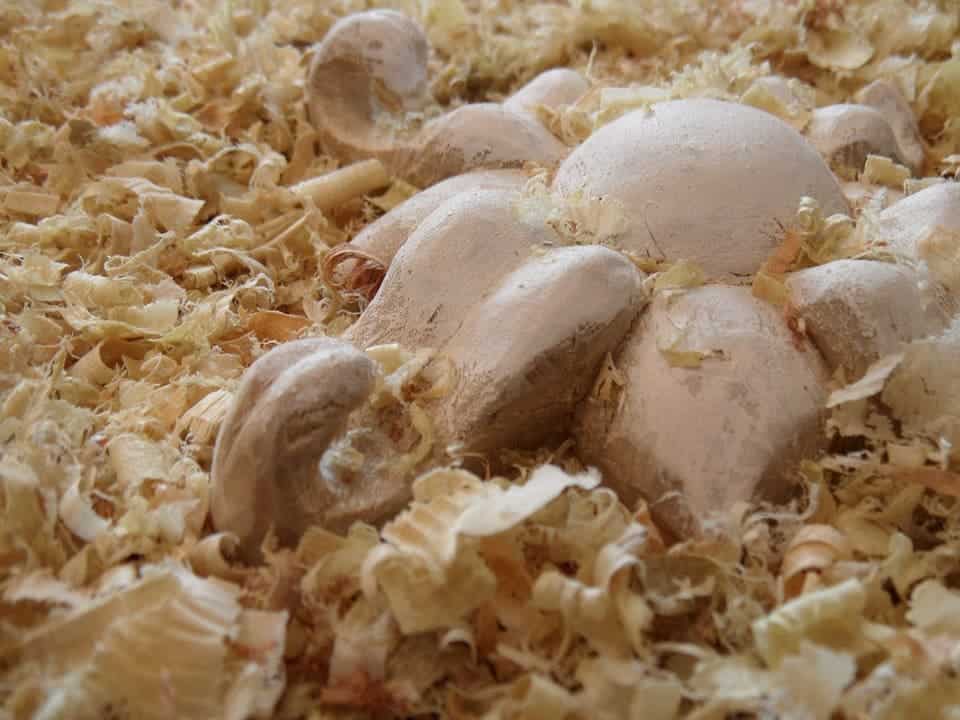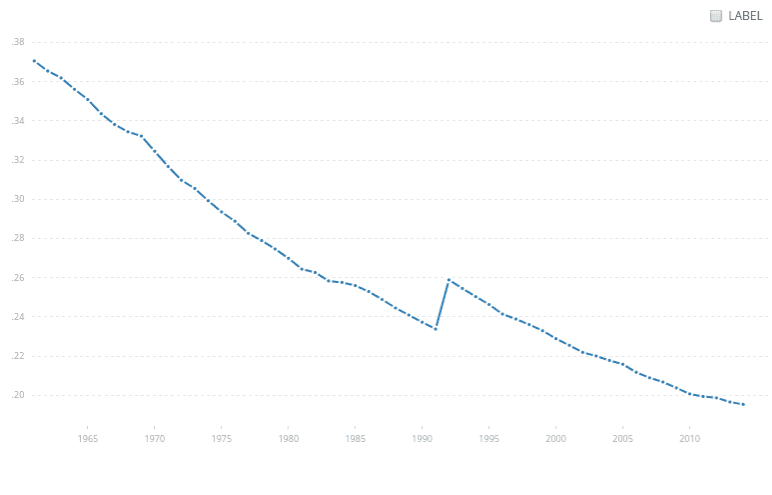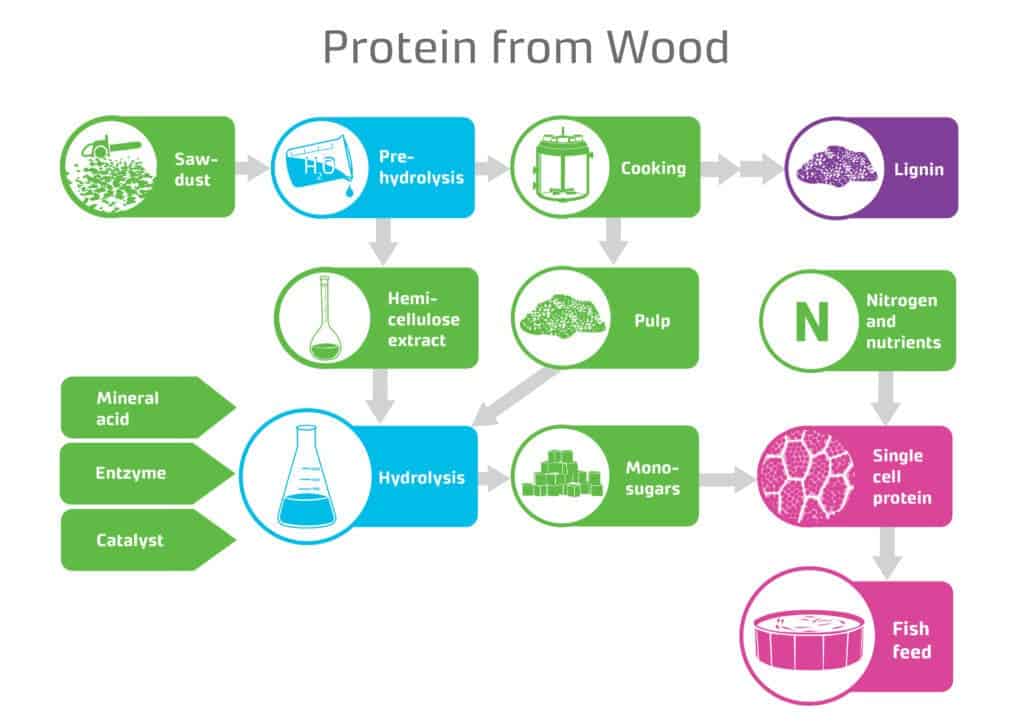World hunger intuitively sounds like something you’d solve by growing more food — but a research project is trying to address it with sawdust. Dubbed MonoCell, the project aims to turn the waste material into single-cell protein to form an inexpensive base for fish feed.

Food insecurity is already a problem, one bound to become more pressing as populations increase around the globe. The UN estimates that the Earth will house roughly two billion more people by 2050, and some 4.5 billion more by 2100. That’s a lot of extra mouths to feed. Compounding the problem is that our planet won’t get any bigger, meaning we’ll have less and less arable land available to feed each one of us. While improving technology and know-how is driving production figures up, we’re running out of arable land per capita — we’ve been doing so for a long time now.

Chart via The World Bank / Food and Agriculture Organization.
It’s not hard to see why people are concerned about food insecurity looming in the future. In an effort to secure new sources of food for future generations, a research project from Luke (Luonnonvarakeskus, Finland’s natural resource institute) led by PhD Risto Korpinen is looking to turn sawdust into fish feed.
Dust to bass
Korpinen is leading a project dubbed MonoCell — High-quality single cell protein for fish feed. It’s pretty descriptive, as far as names go, aiming to turn sawdust into usable protein for fish farms. The idea of supping on wood isn’t new in Finland. During a famine in the 19th century, the Finns took to making bread out of pine bark — an idea they re-used during their civil war of 1918.
This project, however, is a bit more refined. The team hopes to take what’s essentially waste material, available in many countries around the world, and turn it into a viable source of fish food. If successful, such technology would also help take the pressure off of the agricultural sector and wild fish stocks — which are currently supplying fish feed — curbing an increasingly unsustainable practice and preventing further ecological damage from these industries.
“There has been a lot of discussion about the challenges that food production has to face in the future. That is also one of the reasons why I came up with this idea”, Korpinen explains.
“The use of wild fish in feeding has led to the collapse of global fish stocks,” he says, adding that Finland is relying heavily on imported soy-based feed, and “is lacking a sustainable domestic option for fish feed.”
Korpinen is very familiar with sawdust. His master’s degree from the Åbo Akademi University in Turku, Finland, pertained to making cellulose out of this material. His background determined him to look into the possibility of turning sawdust into food especially since it’s not a readily-edible material.
“We could do these same things with potato or corn starch too, but starch can also feed humans,” he explains. “In the US they make bioethanol out of starch, even though there are plenty of people in the world suffering from hunger. It just goes against my morals to use food in fuel production.”
Korpinen is confident that the wood-derived feed has a real chance of being an economic hit. Pulp mills already have to dispose of the sawdust somehow, and already have the infrastructure to “establish protein production units on their properties,” he explains.

Image via Luonnonvarakeskus / Luke.
These could help the businesses derive an extra profit from what’s essentially waste material, and may yield other benefits from circulating not just “materials, water and chemicals but also energy, like electricity and steam.” The process would also solve a problem Finnish sawmills are faced with in particular: right now, their sawdust can be used to make biofuels, but the country’s energy policy is virtually barring them from the market.
Finland subsidizes the use of forest chips (which are imported) as a source of energy, but these subsidies do not extend to domestic sawdust. As such, local sawmills have a lot of sawdust on their hands that they simply can’t get rid of, and like pulp mills, stand to gain from MonoCell program. In fact, one private company has already agreed to test-run their sawmill-to-protein process.
“We also hope to find partners from the producers of animal feed. But first we have to do the research and clarify the costs and material use.”
The team conducted the first few experiments of the program this August. Turning sawdust into protein is a complex process that includes several stages, however, so there’s still a long way to go. Luckily, some of the procedures involved are fairly familiar to the team as they’ve been used in past projects. They hope to conclude the research by the autumn of 2017.
Korpinen will mainly be working on the first stages on the project, as he is the lead researcher and the one conducting the initial experiments. After that, the team — consisting of ten researchers from all over Finland — will mostly take over and expand on his results. It consists of members with varied areas of expertise, including food and nutrition experts, and at the end will perform a life cycle analysis to find out “how much energy and chemicals have been used in the whole process”, Korpinen explains.






